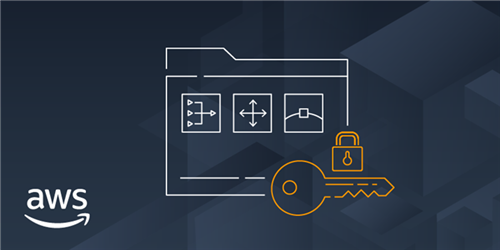.pngL.jpg)
Earlier, there were two certification exams candidates had to clear to earn the Azure Solutions Architect (Expert) credential - the AZ-300 and the AZ-301. By September 2020, these two exams were officially retired by Microsoft. Their replacements are the new AZ-303: Microsoft Azure Architect Technologies exam and the AZ-304: Microsoft Azure Architect Design. Both these exams also went through a round of updates in November 2020.
The AZ-303 and the AZ-304 are updated versions of the previous Microsoft Azure Architect exams that specialised in Technologies (300) and Design (301) respectively. This role requires expertise in the subject matter to design and implement solutions for Microsoft Azure operations. This entails features like storage, network, compute and security. Microsoft Azure Solution Architects are responsible for advising stakeholders and transforming business needs into reliable, scalable and secure solutions. It also requires confederation with cloud DBAs, executives and customers for solution execution.
To apply and sit for this certification exam, you need advanced knowledge and insight into several IT operations which includes virtualisation, networking, security, identity, disaster recovery, business continuity, governance, data recovery and budgeting. Professionals in this role oversee how decisions in multiple areas impact the overall solution. Additionally, you need skills and expertise in either of the following domains:
-
Development
-
Administration
-
DevOps
AZ-303 Vs. AZ-304: The Key Difference:
Implementing vs designing:
To understand this role better, imagine the AZ-303/ AZ-304 roles were building construction-related roles. In such a situation, an AZ-303 certified professional would implement the existing design for the building. The AZ-304 certified professional would be responsible for creating the design to be implemented.
-
The AZ-304 certification focuses on identifying and solving business problems through real-world constraints, objectives and examples. A professional with this certification ensures solutions are selected based on the needs of the enterprise.
-
The AZ-303 certification focuses on implementing these solutions to ensure they are effectively migrated, implemented or built.
Which Certification Should You Complete First?
Most Microsoft Azure architects choose to earn the AZ-303 certification before the AZ-304. Looking at it logically, this step is the right way to go. By earning the AZ-303 certification, you prove to yourself and your employer that you understand how Microsoft Azure services work. After that, the AZ-304 allows you to cement your understanding of conceptually designing Azure solutions.
Breaking Down the Certification Exams - AZ-303 and AZ-304:
Infrastructure:
The infrastructure of this Azure certification focuses on Microsoft Azure resources such as networks, applications, virtual machines and ARM (Azure Resource Manager) templates. The implementing professional understands how to configure and deploy templates and resources, while a designer chooses how these resources need to be provisioned.
Both designer and implementer should have a deep understanding of web apps, app services and logic functions and apps, along with container-based apps such as AKS (Azure Kubernetes Service).
Monitoring:
This entails metrics, logging, alerts and reporting. An implementer demonstrates their understanding through direct monitoring, which includes performance capacity, service spends and health and alerts and logging. The designer determines solutions to minimise costs and monitor tools and for procedures such as escalation and event routing. Design also includes decision-making for which metrics are important, dependent on the requirements of the business.
Management:
There are several domains under management that surround business identity, continuity and security along with migration from existing or former infrastructures. This includes on-premise data centres.
For identity and security, designers direct blueprinting authentication using multi-factor and hybrid options, authorisation such as role-based assignments and access control, governance strategies through Azure Blueprint or Azure Policy, and Azure Key Vault and other security solutions.
The implementer understands how to deploy these solutions within an existing or a new Microsoft Azure environment.
Migration is a key part of management. The implementer is responsible for migrating workloads through Azure Migrate. The designer assesses and interprets on-premise data, servers and applications to come up with strategies to migrate these workloads to a cloud platform.
Also Read: Guide To Crack the AZ-104 Certification Exam
Data Platforms and Storage:
Data storage and platforms combine within a single idea, that zeroes and ones should be stored for app delivery while analytics should be used for enhanced decision making. It begins with storing accounts before moving into CosmosDB or Azure SQL databases. It could also move into Azure Synapse Analytics and Data Lakes. This also encompasses moving and transforming data using services like Data Bricks and Data Factory.
An implementer configures data platforms and storage accounts, performs data transformation and mapping and executes analytics options.
Designers focus on access, tool selection and storage tiers. This encompasses designing solutions for scalability, encryption and sizing, and selection of the right data platform. The designer also selects data integration such as Data Bricks, Data Factory, Synapse Analytics and Data Lake.
Salary and Employment Opportunities:
With the onset of the global pandemic, businesses were forever disrupted. The global IT industry witnessed a shift towards full-time remote employment and working conditions. Consequently, there is now a rising demand in the industry for implementing and leveraging cloud solutions. Microsoft Azure is among the leading players in this market.
The cloud provides businesses with higher mobility, which has seen a rising demand since remote working became a global professional phenomenon. While the pandemic is slowing down, many surveys estimate remote working to grow much faster, with a lasting effect. In support of this growth, about 66% of businesses have deployed a central team for cloud technologies or a cloud centre. The people in charge of these centres are individuals certified as cloud professionals.
According to one 2017 Pearson VUE whitepaper and Microsoft data, 23% of certified Microsoft technologists have reported that earning an Azure certification has increased their salaries by as much as 20%. Newly hired certified employees also report reaching their full potential faster than others and receiving more chances to advance. On average, a certified Azure solution architect earns a 15% higher salary as compared to a non-certified professional and adds 20% more value too.
Earning a Microsoft Azure Solutions Architect Expert credential is a proven way of validating and demonstrating your skills so that you stand out in the industry. Give your career the boost it needs and enroll in an online training course today.

instorydesign.Theimageshouldfeatureabackgroundw.pngM.jpg)
min.pngM.jpg)



.pngM.jpg)
COMMENT